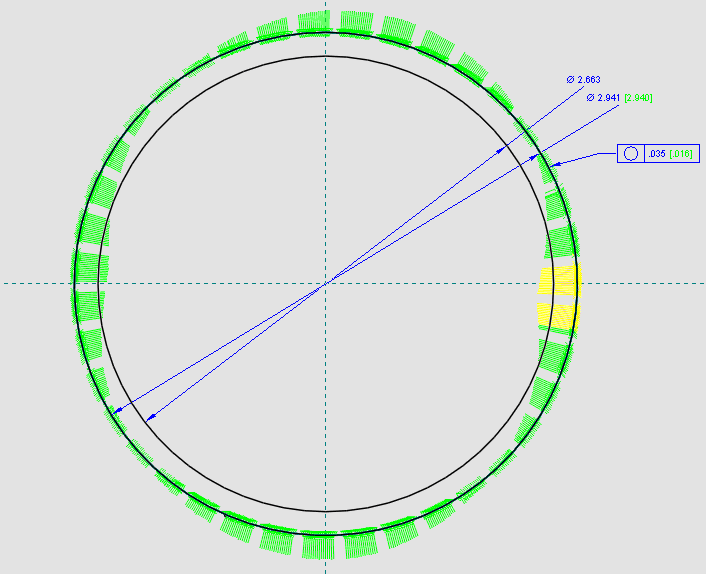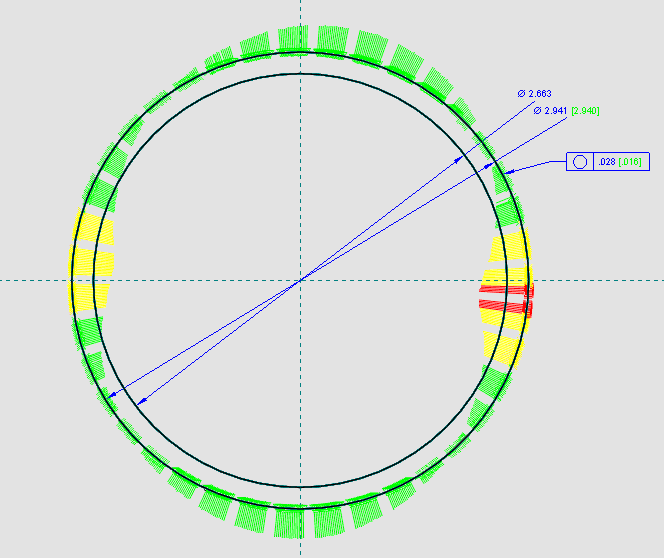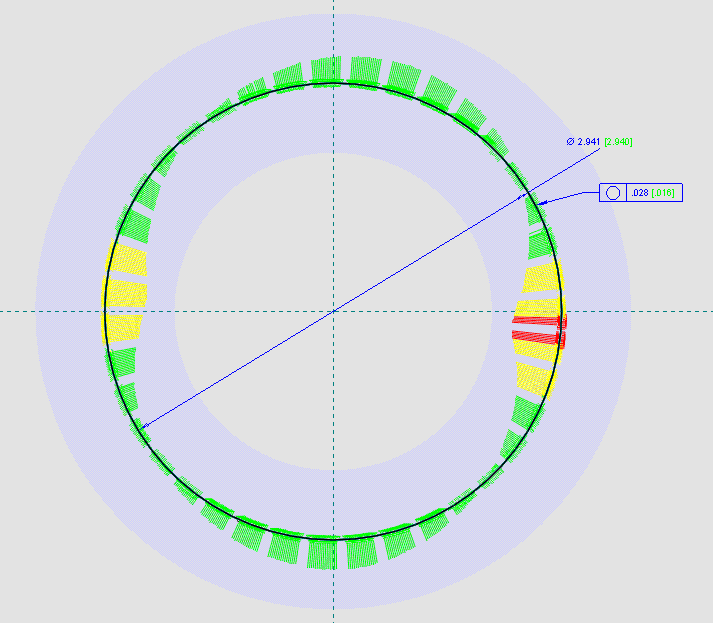Let me give this a shot.
The dimensions indicate the circles represent the size limits and NOT the circularity tolerance. I assume the green and yellow "bars" represent the radial distance of the surface relative to an axis of rotation (center of the inspection device). You did not provide the "thickness" of the part, so I assume it is "thin" -a disc and not a pin.
First: Rule #1 is in effect here, so the surface can never be outside the boundary of a perfect form at MMC - a circle of 2.941. Many of the green bars extend beyond the 2.941 circle, which represents the perfect boundary, so Rule #1 is violated and the size is too large and also out of tolerance.
Second: The .035 circularity tolerance reduces the default 2.941-2.663 = .278 circularity error allowed by Rule #1 to two coaxial circles .035 radially separated. These circles "float" inside the boundary of a perfect form circle of 2.941 and get larger or smaller as the size varies. Again, I assume the two circles you show are size limits and not the .035 form error circles, which would be much "smaller" at the magnification shown.
One way to inspect the part NOT using a CMM, which would "automate" the verification:
1) the actual local size (micrometer readings) at every cross-section must be within size limits
2) the part must fit through a ring gauge with an inside diameter of 2.941 to confirm the surface is not outside the boundary of a perfect form circle.
3) a series of see-through Mylars (to accommodate different part diameters) with two .035 apart circularity circles is made. One at a time they are overlayed over the plot of green bars. The Mylar can be shifted around - no datums here. One of the Mylars must "capture" all of the outside edges of the green bars inside the coaxial circles. This confirms the circularity error. This technique is not viable at low magnification.
Hope this helps
Certified Sr. GD&T Professional




